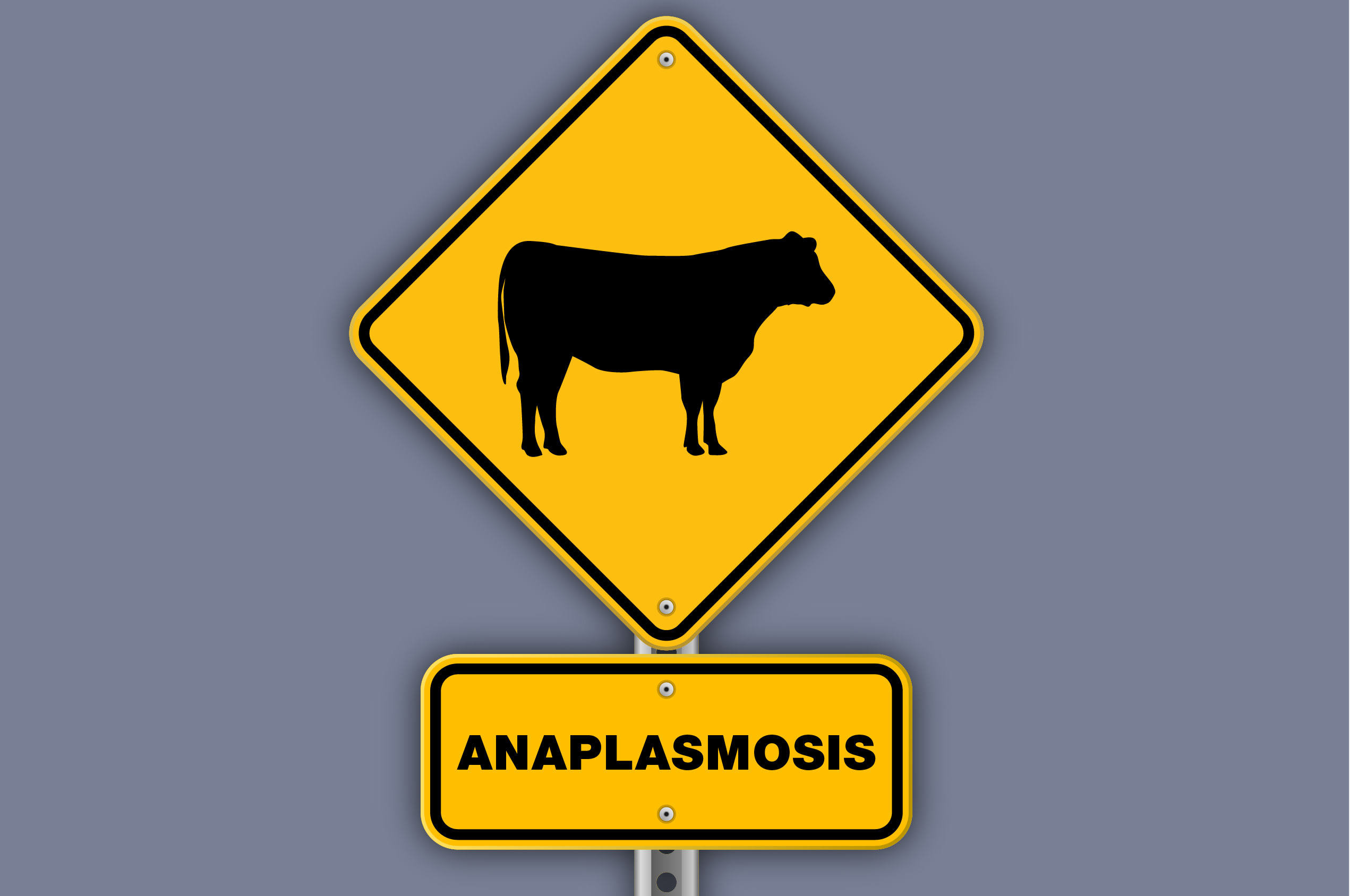While this parasitic disease used to be more common in certain parts of the country, such as the Gulf Coast, other areas such as the Great Plains and the Midwest have seen an uptick in the number of cases in the last few years.
With that said, here are five things producers across the U.S. should know about anaplasmosis and how to avoid it in its peak season – late summer and early fall.
1. What is anaplasmosis?
Anaplasma marginale is a rickettsial bacterial organism that infects red blood cells. Not specific to one class of cattle, this pathogen parasitizes red blood cells to survive, and as the infection progresses, the animal eventually becomes anemic.
The loss of red blood cells leads to a decreased oxygen-carrying ability, which then leads to clinical signs. It usually takes about a month from the time of infection to clinical disease, but the range is six to 70 days.

2. How does the disease spread?
Many factors have led to the spread of this disease. Introduction of carrier animals from outside herds along with an increased threat from vectors such as ticks have most likely lead to the spread. Blood must be transferred from one animal to another to transmit the pathogen. Stable flies and horse flies can mechanically transmit the anaplasma organism from one animal to another. These flies are both blood feeders and carry the pathogen between feeding on different animals.
3. What are the clinical signs?
Unlike most disease processes, clinical signs usually only occur in adults greater than 2 years old. This is due to younger animals having greater ability to replace damaged red blood cells. Many times the first clinical sign of the disease is dead adult cows or bulls found in the pasture. Animals with the clinical disease will have severe difficulty breathing, lethargy and may be extremely aggressive. Abortions, fever, weight loss and icterus (yellowing of mucous membranes) can all occur.
4. Is there treatment?
Acute infections can be treated with injectable oxytetracyclines. Early treatment stalls the infection and the animals can regenerate red blood cells. However, in severe clinical cases, simply moving the animals can kill them due to the low levels of oxygen and red blood cell loss. Animals that recover will become lifelong carriers of the disease. Even with treatment, the organism remains in the bloodstream for the rest of its life. The positive side of this is they will have built lifelong immunity and will not break with disease again. The negative side is these animals will be a reservoir for disease transmission through the herd. As areas become endemic and high rates of early life infections occur, the disease begins to normalize within herds.
5. What are the steps for control?
Due to the complexities of the disease, anaplasmosis control must have several tiers. Many of these control strategies depends on the area and risk to each individual herd. Having a strong veterinary-client-patient relationship is extremely important to help establish this risk – which determines the ultimate control plan. It is also important to note that once anaplasmosis has entered an area, it is typically there for good. Our control and treatment strategies help minimize the amount of clinical signs and death loss, not prevent infection.
Injection needles have been proven to transfer enough red blood cells from one animal to the next, transmitting anaplasmosis from one animal to the next. Changing needles between each animal does take time, but it is an efficient way to break transmission between animals. Certain instruments that may come in contact with blood must also be cleaned with proper disinfectant.
Chlortetracycline (CTC) can also be fed to cattle during the transmission period to help control and reduce the likelihood of a clinical case. But this practice will not eliminate the pathogen. The use of this feed grade antimicrobial does fall under the Veterinary Feed Directive (VFD) status and must be used under veterinary oversight.
External parasite control is also extremely important in controlling this disease. Season-long control typically involves both environmental control and parasiticide use. Proper manure and feeding management, which reduces decomposing feed, will help decrease the breeding grounds for some of these pests. Parasiticides are also targeted to specific pests during certain times of the year. Application of two or more methods (pour-ons, feed-through, rubs, etc.) is often indicated to obtain season-long protection.
PHOTO: Illustration by Sarah Johnston.







